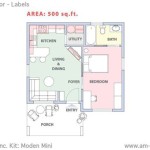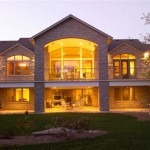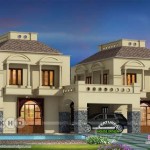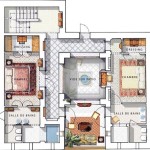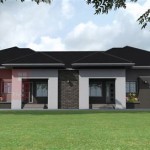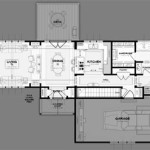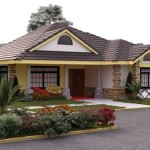Gone With The Wind House Floor Plan: Exploring Tara and Twelve Oaks
Margaret Mitchell’s epic novel, Gone With The Wind, captivated readers with its portrayal of the American Civil War and Reconstruction era. Integral to the story are the two iconic plantations: Tara and Twelve Oaks. While Tara represents resilience and survival, Twelve Oaks embodies the opulent, pre-war South. Understanding their floor plans offers valuable insights into the lifestyles and social structures of the period.
Key Aspects of Tara's Floor Plan
Tara, the O'Hara family plantation, is described as a plain, functional farmhouse built for practicality rather than elegance. While the novel doesn't provide precise architectural details, several key features can be gleaned from the text and subsequent film adaptations.
These include: * A central hallway typical of Southern architecture. * A front porch spanning the width of the house. * Several bedrooms likely located on the upper floor. * A dining room and parlor situated on the main floor. * Likely a detached kitchen typical of Southern plantation houses to minimize fire risk and heat within the main house. * A surrounding landscape encompassing fields, slave quarters, and outbuildings. Tara represents the land and its connection to the O'Hara family's identity.
Tara: Symbolism of Resilience
Tara's simplicity stands in stark contrast to the grandeur of neighboring plantations like Twelve Oaks. This architectural modesty reflects the O'Haras' status as relatively new landowners within the established Southern aristocracy. The house's endurance through war and hardship symbolizes the resilience of Scarlett O'Hara and her family, and by extension, the resilience of the land itself.
Key Aspects of Twelve Oaks' Floor Plan
Twelve Oaks, the Wilkes family plantation, is described as the epitome of Southern charm and elegance. The novel depicts it as a grand mansion meticulously designed to showcase wealth and social standing. While fictional, Twelve Oaks represents the idealized plantation lifestyle of the antebellum South.
Features of Twelve Oaks likely include: * A grand entrance hall and staircase. * Numerous spacious bedrooms for family and guests. * Formal dining and drawing rooms for entertaining. * A library reflecting the Wilkes family's intellectual pursuits. * Extensive balconies and verandas offering panoramic views of the surrounding landscape. * Beautifully landscaped gardens and grounds.
Twelve Oaks: Symbolism of a Lost Era
The lavishness of Twelve Oaks signifies the opulence and extravagance of the pre-war Southern aristocracy. The plantation's destruction during the war symbolizes the demise of this way of life, a loss deeply mourned by characters like Ashley Wilkes. The contrast between Tara and Twelve Oaks highlights the changing social landscape of the South.
Interpretations and Adaptations
Depictions of Tara and Twelve Oaks vary across different adaptations of Gone With The Wind. The iconic film version offers a visual interpretation of these plantations, shaping public perception for generations. Subsequent stage productions and artistic renderings also offer unique perspectives, further enriching the imagined spaces. These artistic representations underscore the enduring impact of the story.
Points to Consider Regarding Adaptations: * The film's depiction of Tara emphasizes its rustic charm, albeit with a certain Hollywood romanticization. * Twelve Oaks, as portrayed in the film, embodies the antebellum South's grandeur. * Different adaptations offer varying interpretations of architectural details, often influenced by artistic license and practical limitations.
Architectural Influences
The architecture of both Tara and Twelve Oaks reflects the prevailing styles of the antebellum South. Greek Revival and Neoclassical influences are likely present in both houses, marked by features such as columns, symmetrical facades, and elaborate ornamentation. While Tara represents a simpler vernacular interpretation of these styles, Twelve Oaks embodies their grandest expression.
Specific Architectural Influences include: * Greek Revival elements, evident in the use of columns and pediments, reflect the influence of classical architecture. * Neoclassical design principles, emphasizing symmetry and balance, contribute to the houses' overall aesthetic. * Vernacular architecture, adapted to local climate and materials, shapes the practical aspects of Tara's design.
The Enduring Legacy
The descriptions of Tara and Twelve Oaks, while fictional, have contributed significantly to popular imagery of the antebellum South. The architectural details, whether implied in the novel or visualized in various adaptations, offer a glimpse into a bygone era. These houses, symbols of contrasting lifestyles and societal changes, remain ingrained in the cultural imagination.
Key takeaways concerning the legacy: * Tara and Twelve Oaks serve as powerful symbols of the Old South. * The architectural details, whether real or imagined, offer a glimpse into the past. * These fictional plantations continue to influence popular understanding of the antebellum period.

Gone With The Wind Sets Tara And Twelve Oaks

Tara Interior Beautiful Buildings Southern Mansions Gone With The Wind

Tara The Set

Gone With The Wind 260 Surf Or Sound

Tara Gone With The Wind Floor Plan Google Search Painted Backdrops

Tara From Gone With The Wind By Racncone123 Exchange Community Sims 3

Gone With The Wind Sets Tara And Twelve Oaks

The Inspiration For Twelve Oaks In Gone With Wind Hooked On Houses

Pin On Gone With The Wind

4 Bedrooms And 3 5 Baths Plan 5288

